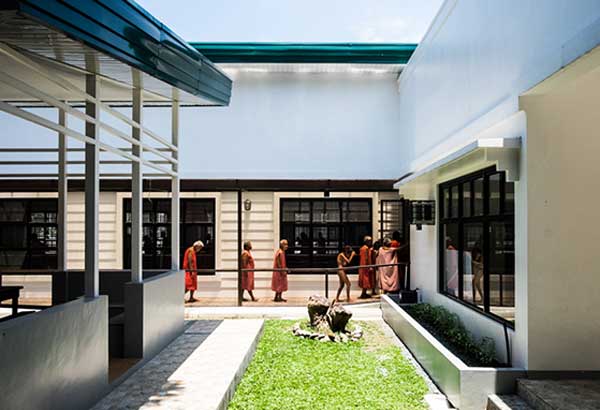These four walls

The Geriatric Female Pavilion of the National Center for Mental Health. Photos by Nicola Longobardi
There is a common statement often dropped whenever somebody mentions that he/she is from Mandaluyong — a city within Manila. The usual question is, “Saan banda d’un, sa loob o sa labas? (Where in Mandaluyong, inside or outside?)” The jest, evidently insensitive, is meant to joke about whether the person in Mandaluyong lives sa loob — inside Mental Hospital, or sa labas — outside Mental Hospital, which is located in the city.
The National Center for Mental Health, the biggest hospital that treats patients with mental illnesses in the Philippines, has remained in Mandaluyong for many years. It was established in 1928 and has since has gone through a number of different name changes. But this year, the establishment becomes more important than ever.
The Philippine Mental Health Bill (Senate Bill No. 1345) was finally approved in May 2017, a milestone for the country, as we were one of the few remaining countries in the world without one. The bill seeks to integrate mental health services at the community level, as well as psychiatric, psychosocial, and neurologic services in all regional, provincial, and tertiary hospitals.
When the World Health Organization did an assessment of the mental health system in the Philippines back in 2007, the report already made some crucial points. At that time, only five percent of the total health budget was allotted to mental health, and these were mostly spent on the operation and maintenance of mental hospitals.
It was also reported: the occupancy rate of the existing 46 outpatient facilities nationwide had already reached 92 percent; and that it was common for patients to be involuntarily admitted, secluded, and restrained. Other parts of the report stated, “Public education and advocacy campaigns are overseen by the DOH and coordinated in the regional offices. Private sector organizations do their share in increasing awareness on the importance of mental health, but they utilize different structures. There are mental health links with other relevant sectors, but there is no legislative or financial support for people with mental disorders.”
The glaring fact was that if you had some money and were struggling with mental illness, you could afford to treat yourself in a private hospital, in discretion. But if you didn’t have the resources, they would toss you into the mental hospital, to separate you from society. Without the adequate research, and the right amount of training to treat people with mental illnesses — for a large amount of time until today, these people were merely shunned.
Inside the National Center of Mental Health, the roads are serene. It’s nothing like the scary tales of darkness and delusion, but the truth is that images of the wards can be quite haunting. The patients are clearly dealing with troubles; they are fighting for their lives. The nurses and the staff of the hospital care for them, but the facilities are lacking: there are only enough beds for the increasing number of patients. When they become aggressive, the nurses, who decide for themselves, seclude them in rooms behind bars. Here, patients struggle with depression, bipolar disorder, and schizophrenia; sometimes, their experiences are not without violence.
Yet, the problem does not lie here, inside the mental hospital, which already struggles to work within its means. The problem is not with its devoted workers who care for the patients.
No, the problem is outside, in the streets, with the people who realized only now that mental health is an illness, not a curse. The problem is we’re uneducated. The problem is we can’t shake off the stigma, the ridiculous fear that runs among us. The problem is the system that failed to care for them for so long. To be honest, the problem is not sa loob, where it seems that they make do by helping each other; the problem is sa labas. Outside. We are the problem. And those who remain in the dark will continue to suffer, unless we release ourselves from the shackles of ignorance and fear.















